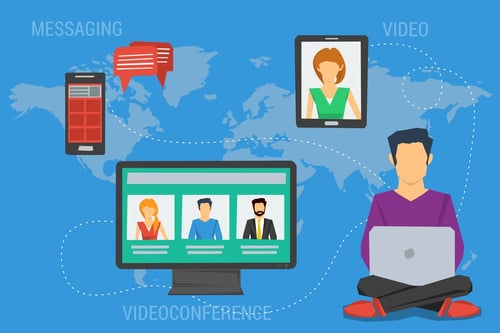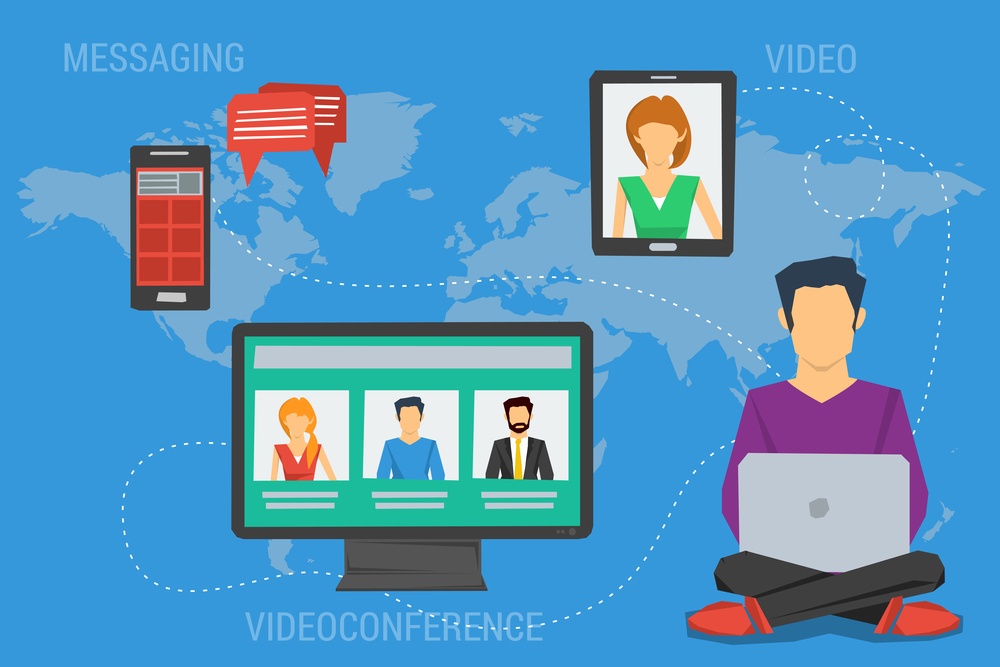
5 min read
In my book Effective HR Communication I talk about the three types of communication media - print, live and digital. They all have their pros and cons, having their time and place based on what you’re trying to communicate and the ‘call to action’ you are trying to achieve. Webinars technically fit under the category of digital communication, but the great thing about them is that they’re also able to achieve some of the benefits from live communication, so you get two for the price of one.
Here are some of the benefits I’ve seen by using webinars:
- Present concepts and material in a clear and consistent way. Everyone can hear the same message in the same way, so no misunderstandings or receiving the wrong information.
- Provide information on difficult and/or complex concepts. You’re able to explain and show in presentation material some of the details, overcoming the challenges of complex information.
- Repetition. Since you can record webinars, it's great to be able to have your communication available to refer to again and again.
- Offer a way for employees to give immediate feedback and ask questions. This is often a benefit limited to live communication, but with webinars you are able to achieve this important benefit as well.
- Elicit trust. Trust can be achieved by delivering the message through speech and not written words.
Despite this there are still steps that need to be addressed to ensure that the webinar itself is an effective communication tool, and not used as a last resort.
Here's what to keep in mind:

1. Preparation, preparation, preparation
You could have the greatest presentation in the world, Nobel prize worthy, primed and ready to go, but if you haven’t taken the steps to prepare properly no one will ever see or know this. The key here, as with any event, is to create yourself a project plan or a to do list, making sure to cover and manage all of the key steps.
Make sure that you or someone on your team have thought through the logistical steps. Have the invites and reminders been sent out and ensure the webinar functionality can handle your event (e.g. manage questions and answers, manage the number of attendees). Think this isn't important? I once ran a webinar and didn’t check the capacity, and about 10 minutes in started getting messages from employees who couldn’t join the line. Little did I know that the webinar line could only handle 30 people ... and I had invited 100! Also, practice your presentation over and over again. As the expression goes "practice makes perfect," which is what you want on a webinar.
2. Deliver against your objectives
When developing your webinar material it’s important to start with the objectives, so what do you want to get out of the webinar (e.g. you want your employees to sign up for a new benefit, drive them to your recognition platform, etc). Once you decide this, you can target the material to achieve this. Remember to always double check that your material meets your objectives - the time spent checking over your work is worthwhile, as you want to make sure that your key points are made and objectives are met.

3. Reach your audience
It’s all well and good creating what you believe is an effective webinar, but if you don’t have it "reach" your audience then you’ll end up with your employees doing everything other than listen to you as your present the material. I’m sure you know what I mean, as we’ve all sat through webinars where we either start day dreaming or start going through all of our emails during the session.
Here’s a few things to keep in mind when developing effective content, gleaned from my book, that will reach your employees:
- Make it valuable. Find ways to show value in your content, and do so as quickly as possible (before they lose interest).
- Think of employees as consumers. Think of yourself as a marketer who is selling a product to a consumer when developing your material. Use marketing techniques to grab and maintain their attention. If you don’t know how to, take someone from the marketing team out for a coffee and ask for their help.
- Put yourself in their shoes. Start by understanding what they know (and don’t know) about the subject matter by putting yourself in their shoes. Make sure your content will answer all their questions and give proper background.
- Keep it simple. Keeping it simple is key to clearly and effectively sharing your messages with your employees. For each page of your material ask yourself, what is absolutely necessary to explain/present and what is just extra? At Reward Gateway our unwritten rules on presentations are that a slide can have no longer than one sentence. At first I found this challenging, but now it forces me to keep it simple and create the focus to get my message across.
- Make material interesting. Find ways to make it interesting through the use of keywords and images. This not only breaks up the material, but draws them in and engages them with the material.
4. Engage with your audience!
If we want our audience to engage with the topic then it only makes sense that we need to engage with them. The delivery is just as important as the creation of the actual webinar materials.
Your webinar should sound natural, encouraging your audience to tune in, so, again practice is essential. Another way is by providing an opportunity to ask questions, creating an opportunity for a two-way dialogue. Even you have a lot of people on the line, your webinar technology can help you manage the conversation. Consider mixing up presenters, as changing voices can often re-engage with your audience.
Finally, be enthusiastic! Convey your engagement and energy into your presentation, it’s contagious and more than likely to leave a lasting positive impression. Be a little dramatic - you’re allowed to, to put on a successful webinar.
Putting together a webinar should require careful consideration. As with all communications, remember that your presentation and the information you’re sharing directly affects your employees. Do it right, and your employees will remember that information. Do it wrong, and you’ll find yourself re-explaining it over and over, making no use of your time - and of your employees.

 Debra Corey
Debra Corey
